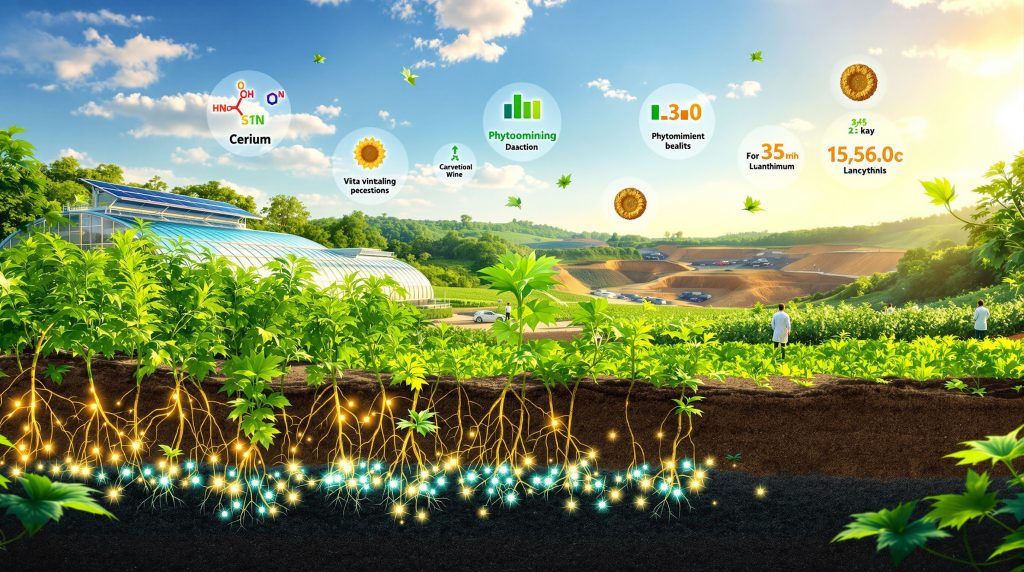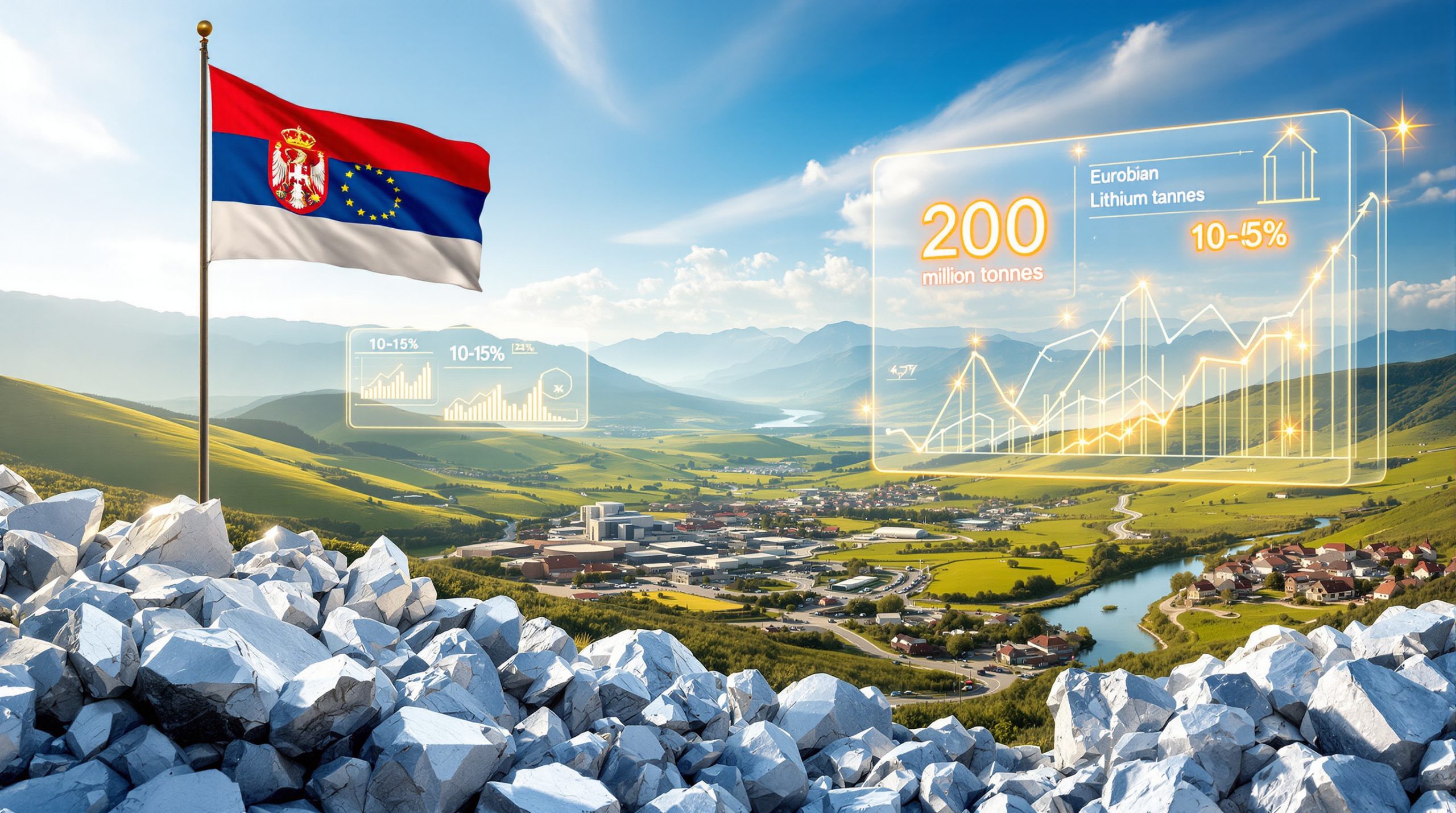Understanding the Biological Approach to Metal Recovery
Phytomining and rare earth elements represent a revolutionary biotechnology that leverages natural plant processes to extract valuable metals from contaminated soils, mine waste, and low-grade ore deposits. This sustainable extraction method employs specially selected plants called hyperaccumulators to absorb, concentrate, and facilitate recovery of metals including rare earth elements through their inherent biological mechanisms.
The foundation of phytomining lies in the remarkable ability of certain plant species to uptake metal ions through their root systems at concentrations far exceeding typical vegetation. These hyperaccumulator plants have evolved enhanced cellular transport systems that can selectively concentrate target metals in their above-ground biomass, creating a biological pathway for metal recovery that operates without the environmental disruption associated with conventional mining operations.
While commercial applications have demonstrated success with nickel and cobalt recovery, the extension of phytomining and rare earth elements techniques remains largely developmental. Furthermore, the technical challenges and economic viability of REE phytomining continue to require extensive research and validation.
How Does Phytomining Work for Rare Earth Element Recovery?
The Three-Stage Extraction Process
Stage 1: Selective Plant Cultivation
• Hyperaccumulator species are cultivated on REE-enriched soils or contaminated sites
• Plants absorb metals through root systems via specialised uptake mechanisms
• Enhanced cellular transport systems move metals from roots to above-ground tissues
• Cultivation periods typically range from one to three growing seasons depending on species and soil conditions
Stage 2: Bioaccumulation and Concentration
• Target metals accumulate in plant tissues through active transport and passive diffusion processes
• Metal concentrations in hyperaccumulator tissue can significantly exceed background vegetation levels
• Plants continue photosynthesis and growth while progressively concentrating rare earth elements
• Harvest timing requires optimisation based on metal concentration levels and plant maturity
Stage 3: Processing and Metal Recovery
• Harvested biomass undergoes controlled thermal processing to produce metal-enriched ash
• Hydrometallurgical or pyrometallurgical techniques extract concentrated rare earth elements
• Chemical separation processes isolate individual REE compounds for commercial applications
• Final products undergo purification to meet industrial grade specifications
The xylem transport system in plants provides the primary pathway for metal ion movement from root zone to aerial tissues. Research suggests this transport mechanism can mirror soil REE distribution patterns, though specific studies documenting this phenomenon require further peer-reviewed validation.
Which Plants Can Successfully Extract Rare Earth Elements?
Proven Hyperaccumulator Species
Blechnum orientale (Oriental Hard Fern)
Recent research from Chinese scientists has reported the detection of nanoscale monazite structures within Blechnum orientale tissue, representing a potentially groundbreaking development in biological mineral formation. However, these claims require rigorous peer-reviewed validation before commercial applications can be considered viable, particularly regarding phytomining research developments.
The formation of monazite (a phosphate mineral containing rare earth elements) within living plant tissue would require extraordinary cellular conditions capable of organising REE-phosphate complexes into crystalline structures. While scientifically intriguing, such claims demand comprehensive structural characterisation and independent replication by multiple research groups.
• Shows potential for light rare earth element concentration in tropical environments
• Requires validation of reported nanoscale mineral formation capabilities
• Thrives in subtropical climates with naturally REE-enriched soils
Vitis vinifera (Common Grapevine)
Research indicates this species may facilitate passive transport of rare earth elements from soil through root systems to leaf tissue. The xylem transport mechanism appears to reflect soil REE distribution patterns, though specific quantitative data requires citation from peer-reviewed sources.
• Potential for dual-purpose cultivation combining agriculture with metal recovery
• Widespread geographic adaptability across temperate regions
• Established cultivation techniques could facilitate phytomining applications
Dicranopteris dichotoma (Forked Fern)
This tropical fern species has been identified as a natural hyperaccumulator found in REE-enriched environments, though comprehensive documentation of its specific uptake mechanisms and concentration capabilities requires further research validation.
• Naturally occurs in areas with elevated rare earth element concentrations
• Adapted to tropical growing conditions
• Requires scaling studies for commercial viability assessment
Important Note: While these plant species show theoretical promise for REE extraction, no peer-reviewed studies have definitively established their commercial viability for rare earth element recovery. Claims regarding specific accumulation rates and mineral formation capabilities require independent scientific validation.
What Are the Environmental Benefits of REE Phytomining?
Soil Remediation and Restoration
| Environmental Impact | Traditional Mining | Phytomining |
|---|---|---|
| Soil Contamination | Risk of heavy metal pollution | Progressive soil decontamination |
| Water Usage | Intensive consumption | Reduced water requirements |
| Land Disturbance | Extensive excavation | Minimal surface disruption |
| Carbon Footprint | High energy consumption | Potentially reduced emissions |
| Waste Generation | Large tailings facilities | Biodegradable biomass waste |
Ecosystem Enhancement Through Biological Recovery
Biodiversity Conservation Benefits
• Maintains existing habitat structures during metal extraction processes
• Supports wildlife populations through preserved vegetation cover
• Creates potential green corridors in previously degraded mining areas
• Enables gradual ecosystem restoration while generating economic value
Long-term Soil Health Improvement
• Progressive reduction of bioavailable metal toxicity levels
• Enhanced soil structure development through root system activity
• Increased microbial diversity and activity in remediated areas
• Restored nutrient cycling capabilities in contaminated soils
However, comprehensive lifecycle assessments are essential to validate these environmental claims. The processing stage of phytomining, including biomass combustion and chemical extraction, generates emissions that must be quantified against the environmental benefits of reduced conventional mining impacts. Consequently, improved mining waste management approaches could further enhance the sustainability of biological extraction methods.
What Challenges Limit Commercial REE Phytomining Applications?
Technical and Economic Constraints
Extraction Efficiency Limitations
• Current yield rates remain significantly below conventional mining production levels
• Extended cultivation periods required for adequate metal accumulation
• Limited number of plant species with documented REE hyperaccumulation capabilities
• Seasonal variations affect consistent production schedules
Scale and Infrastructure Requirements
• Large land areas needed for commercially viable operations
• Specialised processing facilities required for biomass to metal conversion
• Capital investment requirements for cultivation and processing equipment
• Geographic limitations based on suitable growing conditions
Scientific Validation Concerns
Research Verification Needs
The most significant challenge facing REE phytomining lies in the gap between theoretical potential and proven performance. Claims regarding functional mineral formation within plant tissue, such as the reported monazite structures in fern species, require extensive peer-reviewed validation before investor confidence and commercial development can proceed.
• Independent replication of laboratory results across multiple research institutions
• Long-term field studies to establish sustainable extraction rates
• Quantification of actual rare earth recovery yields per hectare
• Economic modelling comparing costs with conventional mining operations
Technical Feasibility Questions
Current understanding of plant-based REE accumulation mechanisms remains incomplete. While plants demonstrably absorb rare earth elements from soil solutions, the transition from ion accumulation to functional mineral recovery presents substantial technical hurdles that have not been conclusively overcome. However, these developments align with broader mining industry trends towards sustainable extraction methods.
How Does China's Strategic Investment Impact Global Phytomining Development?
Competitive Advantages in Biological Extraction Research
Government-Backed Research Initiatives
China has positioned itself at the forefront of biological mineral recovery research, investing substantially in biotechnology-based extraction methods as part of a broader supply chain resilience strategy. This approach represents a competitive frontier that receives limited attention from Western governments focused primarily on traditional mining permits and downstream manufacturing capabilities.
• Substantial government funding allocated to unconventional REE recovery methods
• Integration of environmental restoration objectives with resource extraction goals
• Development of engineered biological systems for enhanced metal uptake
• Long-term research programmes exploring microbial and plant-based extraction pathways
Supply Chain Diversification Strategy
• Phytomining research complements traditional REE mining operations
• Creates alternative pathways for strategic metal security
• Reduces dependence on high-grade ore deposits
• Enables utilisation of low-grade and waste materials previously considered uneconomic
Western Response to Biological Mining Innovation
While Western governments focus extensively on securing mining permits and developing magnet manufacturing capabilities, the strategic investment in biological extraction methods represents an often-overlooked competitive dimension in rare earth supply chain development.
The decades-long permitting processes required for traditional REE mines in Western jurisdictions create opportunities for alternative extraction technologies to gain commercial relevance. Any system capable of trace-metal recovery without tailings pond construction would generate significant global interest among both investors and regulatory agencies.
What Economic Factors Determine Phytomining Viability?
Cost-Benefit Analysis Framework
Operational Expenses
• Land acquisition or lease costs for large-scale cultivation areas
• Seed stock procurement and plant maintenance expenses
• Specialised harvesting equipment and processing infrastructure development
• Labour costs for cultivation management and biomass handling operations
• Chemical reagents and energy costs for metal extraction processing
Revenue Potential
• Market prices for recovered rare earth concentrates and individual REE compounds
• Environmental remediation service fees from contaminated site restoration
• Carbon credit generation potential from sustainable extraction practices
• Possible agricultural co-products from dual-use plant species cultivation
Market Conditions Favoring Biological Extraction
Regulatory Environment Shifts
• Increasingly stringent environmental standards for traditional mining operations
• Carbon taxation policies that favour low-emission extraction methods
• Government incentives for sustainable resource recovery technologies
• Public pressure for environmentally responsible mineral sourcing
Supply Chain Economic Pressures
• Extended permitting timelines for conventional REE mining projects
• Growing demand for supply chain transparency and environmental accountability
• Geopolitical risks affecting traditional supply source reliability
• Premium pricing for sustainably-sourced critical materials
However, economic viability ultimately depends on achieving extraction yields and processing costs competitive with conventional mining operations. Current phytomining research has not demonstrated the production rates necessary for large-scale commercial applications. Furthermore, these considerations tie into the broader critical minerals energy transition occurring globally.
What Future Developments Could Advance REE Phytomining?
Technological Enhancement Opportunities
Genetic Engineering Applications
• Development of enhanced plant varieties with improved metal uptake mechanisms
• Accelerated growth characteristics for reduced cultivation cycle times
• Engineered root systems optimised for specific rare earth element absorption
• Enhanced translocation efficiency from roots to harvestable biomass
Processing Innovation Pathways
• Advanced biomass conversion techniques for higher metal recovery rates
• Integrated biorefinery systems combining multiple value streams
• Automated harvesting and processing equipment to reduce labour costs
• Novel extraction chemistry specific to plant-concentrated REE materials
Research and Development Priorities
Species Discovery and Optimisation
• Systematic screening of plant species for REE hyperaccumulation capabilities
• Breeding programmes to enhance metal concentration abilities in promising species
• Adaptation of hyperaccumulator plants to diverse soil and climate conditions
• Investigation of mycorrhizal associations that may enhance REE uptake
Economic Modelling and Commercial Scaling
• Comprehensive lifecycle cost analysis for commercial-scale operations
• Optimisation studies for cultivation density and harvest timing
• Integration strategies with existing agricultural and forestry systems
• Market analysis for niche applications where phytomining may prove economically competitive
The timeline for commercial REE phytomining deployment remains highly uncertain. While the biological foundations show promise, the transition from laboratory research to industrial-scale production faces substantial technical and economic challenges that may require decades to resolve. Nevertheless, the potential mining decarbonisation benefits continue to drive research investment.
Frequently Asked Questions About Phytomining and Rare Earth Elements
How long does it take for plants to accumulate commercially viable REE concentrations?
Cultivation periods vary significantly by species and environmental conditions. Fast-growing species may achieve detectable concentrations within 6-12 months, while most hyperaccumulators require 1-3 growing seasons to reach optimal metal accumulation levels. However, what constitutes "commercially viable" concentration remains undefined without established processing economics.
Can phytomining compete economically with traditional REE mining?
Current evidence suggests phytomining may serve specialised applications where conventional mining is technically or economically unfeasible, such as low-grade deposits or contaminated site remediation. Broad economic competitiveness depends on technological improvements, environmental regulations, carbon pricing mechanisms, and demonstration of consistent production yields. This aligns with the growing focus on natural capital in mining operations.
What rare earth elements are most successfully extracted through phytomining?
Light rare earth elements, including cerium, lanthanum, and neodymium, appear most amenable to biological extraction based on available research. Heavy rare earth elements present greater challenges for plant-based recovery systems, though comprehensive comparative studies remain limited. Moreover, recent studies on phytoextraction methods suggest potential for improving extraction efficiency through optimised plant selection.
Are there any commercial phytomining operations currently producing rare earth elements?
No commercial-scale REE phytomining operations currently exist. While pilot projects and research initiatives continue globally, proven applications remain focused on nickel and other base metals. Phytomining and rare earth elements remain in the experimental development phase.
What environmental conditions are required for successful REE phytomining?
Successful operations require soils with elevated but not toxic levels of rare earth elements, appropriate pH conditions for metal solubility, adequate precipitation or irrigation, and climate conditions suitable for hyperaccumulator plant growth. Site-specific soil chemistry analysis is essential for feasibility assessment.
Disclaimer: The information presented regarding phytomining and rare earth elements represents current research developments and theoretical applications. Many claims regarding plant-based REE extraction capabilities require further peer-reviewed validation. Commercial viability remains unproven, and investment decisions should consider the speculative nature of this developing technology. Environmental benefits, while promising, require comprehensive lifecycle assessment for accurate quantification.
Looking to Stay Ahead of Emerging Mining Technologies?
Discovery Alert's proprietary Discovery IQ model provides instant notifications on significant ASX mineral discoveries, including companies developing innovative extraction technologies like phytomining and sustainable mining practices. Stay informed about actionable investment opportunities across all mining sectors by beginning your 30-day free trial at Discovery Alert and gain a competitive edge in identifying the next breakthrough discoveries.




